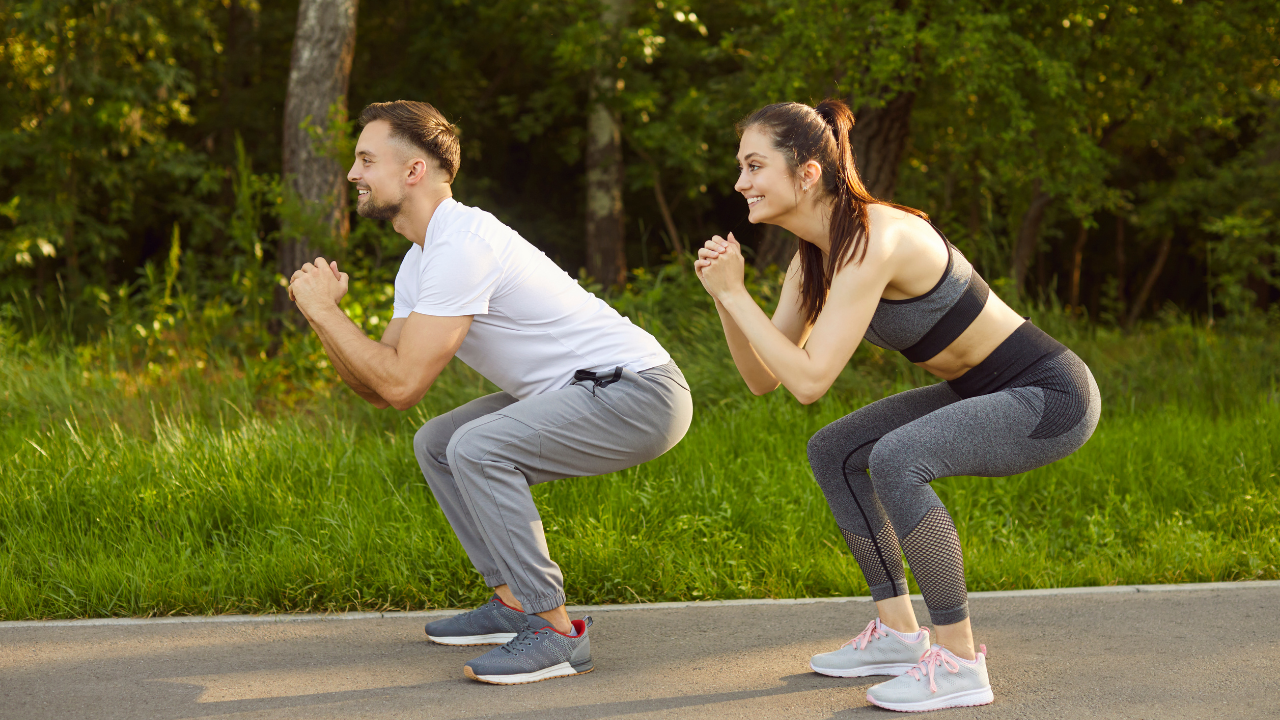Strength training, or resistance training, is one of the most powerful tools for preventing and managing type 2 diabetes. Peer-reviewed studies show resistance training reduces HbA1c levels in adults, and larger strength gains generally lead to larger HbA1c improvements. Additionally, strength training improves insulin sensitivity and glucose uptake and lowers cardiometabolic risks.Evidence shows structured resistance training can be done at home with minimal equipment and still benefit muscle function and metabolic health. Although some trialssuggest supervised or higher-intensity programs may produce larger HbA1c drops than unsupervised home programs. Still, consistent home strength work is useful and practical for many people.
Note: This is not professional advice. Always consult a professional before starting any fitness routine. Risks and results can differ with individual capacities.
How much and how often to practice

Before we head to list no-equipment strength exercises, it is important to note that there are some guidelines and safety rules that people with diabetes should follow.
- The American Diabetes Association recommends doing muscle-strengthening activities at least two to three non-consecutive days per week.
- Alongside resistance exercise, aim for about 150 minutes of moderate aerobic activity per week, for the best improvement in blood sugar control and cardiovascular health.
- Always check your blood sugar before and after exercise if you use insulin or medications that may cause low glucose.
- Stay hydrated, and warm up for 5–10 minutes before every session.
10 no-equipment strength exercises
These ten bodyweight exercises target all major muscle groups. Aim for 1–3 sets of 8–15 repetitions for each move, resting for 30–60 seconds between sets.

1. Bodyweight squatMuscles worked: Thighs, hips, and glutes.How to do it: Stand with feet hip-width apart, lower your body as if sitting in a chair, keeping your chest up and knees behind toes. Push back up through your heels.Tip: Start shallow and gradually lower deeper as mobility improves. 2. Glute bridgeMuscles worked: Glutes and hamstrings.How to do it: Lie on your back with knees bent and feet flat. Squeeze your glutes and lift hips toward the ceiling, then slowly lower.Tip: Pause for a second at the top for maximum muscle engagement.3. Wall push-upMuscles worked: Chest, shoulders, and triceps.How to do it: Stand facing a wall, hands at shoulder height. Lower your chest toward the wall, then push back to start.4. Forward or reverse lungeMuscles worked: Quads, hamstrings, and glutes.How to do it: Step one leg forward (or backward), bend both knees to about 90 degrees, then push back to standing.Tip: Hold onto a chair for balance if needed.

5. Step-upMuscles worked: Legs and glutes.How to do it: Step onto a sturdy platform or step with one leg, press through the heel to lift your body, then step down slowly.Safety: Make sure the surface is stable to avoid slipping.6. Plank holdMuscles worked: Core, shoulders, and back.How to do it: Rest on your forearms and toes, keeping your body in a straight line from head to heels.Tip: Start with 20–30 seconds, and increase time as you build strength.7. Superman stretchMuscles worked: Lower back and glutes.How to do it: Lie face down, extend arms forward, and lift both arms and legs off the ground briefly.Tip: Keep the movement controlled, no jerking or arching the back.

8. Chair dipsMuscles worked: Triceps and shoulders.How to do it: Sit on a sturdy chair, grip the edge with your hands, slide forward, and bend elbows to lower your body. Push back up to start.Caution: Avoid if you have shoulder pain.9. Standing calf raiseMuscles worked: Calves and ankles.How to do it: Stand tall and slowly lift your heels off the floor, balancing on your toes. Lower back down with control.10. Side plankMuscles worked: Obliques and core stabilizers.How to do it: Lie on one side, prop up on your forearm, and lift hips off the floor to form a straight line. Hold for 20–30 seconds, then switch sides.Tip: Bend knees for an easier version; extend legs for more intensity.

Strength training is an evidence-based, practical way to improve insulin sensitivity, preserve or build muscle, and help lower average blood glucose. Start gently, monitor how your body and blood glucose respond, progress gradually, and consult your healthcare team about medication and safety adjustments.Disclaimer: This article is for general informational purposes only and is not a substitute for professional medical advice. Always consult your doctor or a certified healthcare provider before starting any new exercise, especially if you have diabetes or other medical condition. Exercise responses, risks, and results can vary from person to person.


